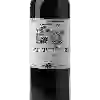
Winery Jean LoronDomaine du Pass Loup Beaujolais
In the mouth this red wine is a with a nice freshness.
This wine generally goes well with pork, poultry or veal.
Taste structure of the Domaine du Pass Loup Beaujolais from the Winery Jean Loron
Light | Bold | |
Smooth | Tannic | |
Dry | Sweet | |
Soft | Acidic |
In the mouth the Domaine du Pass Loup Beaujolais of Winery Jean Loron in the region of Beaujolais is a with a nice freshness.
Food and wine pairings with Domaine du Pass Loup Beaujolais
Pairings that work perfectly with Domaine du Pass Loup Beaujolais
Original food and wine pairings with Domaine du Pass Loup Beaujolais
The Domaine du Pass Loup Beaujolais of Winery Jean Loron matches generally quite well with dishes of pasta, veal or pork such as recipes of italian pasta, roast veal orloff with mushrooms or baked pumpkin.
Details and technical informations about Winery Jean Loron's Domaine du Pass Loup Beaujolais.
Discover the grape variety: Mouyssaguès
Mouyssaguès is a grape variety that originated in the southwest of France. Today it occupies just under a hectare, whereas in the past it filled the entire Lot valley. Its adult leaves have between 7 and 9 lobes. These turn completely red in the autumn. Its blue-black berries are elliptical and short. As for its truncated cone-shaped bunches, they are of medium size. They are also compact and winged. Mouyssaguès has only one approved clone, 1.150. A dozen others have been planted in Aveyron. Mouyssaguès can bud in the middle or late, 8 to 10 days after Chasselas. It ripens early for the second time. Vigorous, it is not very sensitive to the various diseases common to these grape varieties. Although productive, it is preferable to prune it long. The mouyssaguès makes a very astringent and coloured wine. This variety can also be called negret, faroneux, rouge menu or peyregord. Because of its high yield, it is often called the poor man's vine.
Last vintages of this wine
The best vintages of Domaine du Pass Loup Beaujolais from Winery Jean Loron are 2014, 2017, 2016, 2015
Informations about the Winery Jean Loron
The Winery Jean Loron is one of wineries to follow in Beaujolais.. It offers 141 wines for sale in the of Beaujolais to come and discover on site or to buy online.
The wine region of Beaujolais
Beaujolais is an important wine region in eastern France, famous for its vibrant, Fruity red wines made from Gamay. It is located immediately South of Burgundy, of which it is sometimes considered a Part, although it is in the administrative region of Rhône. The extensive plantings of Gamay in this region make Beaujolais one of the few regions in the world that is so concentrated on a single Grape variety. Pinot Noir is used in small quantities in red and rosé wines, but in the name of regional identity, it is being phased out and will only be allowed until the 2015 harvest.
The word of the wine: Blanc de blancs (champagne)
Champagne made only from the Chardonnay grape. The expression has been somewhat overused by the intensive use made of it by certain large distributors of white table wines (or sparkling wines) who were thus seeking to promote their product.














